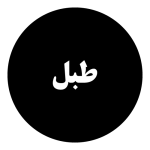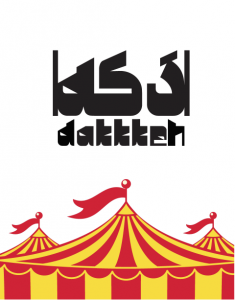First Season
Issue 03
Cold War – Literature and Publications (A)
December 2020
Content
– The Influence of the Cold War on Literature
Fereydoun Majlesi
– Soviet Cultural Diplomacy in Iran
Nodar Mossaki and Lana Ravandi-Fadai
– Iran’s Poetry and the “Cold War”
Kamiar Abedi
– The Influence of Cold War on Iran’s Culture and Literature
Hassan Mir Abedini
– The Conflict between Communism and the Soviet Union in
Publication
Kaveh Bayat
– The Soviet Union’s Iranologists and the Iranian Studies
Amir Zamani
– A brief study of Iran’s Literature during the Cold War
Noor-olddin Salemi
– The Culture and Oral Literature of Azerbaijan during the Cold War
Mehran Davoodi Azar
– Russian Publications in Iran
An interview with Ebrahim Golestan
– The Cold War in the Children’s and Young Adults’ Literature
Masood Koohestani Nejad
– The Discourse of the Leftism
Hamidreza Daalvand
– That Year Was a Bad Year!
Mohammad Meftahi
Abstract
Tabl Magazine’s third issue, published in December 2020, studies the Cold War with a focus on the literature and publications. Through eleven essays and an interview, this issue tries to explore the Cold War’s influences on the written and oral literature of Iran, Iranian studies, and the emergence of new literary trends, under the influence of leftist discourse.
The primary weapon used for the Cold War was soft weaponry, that is, propaganda as well as material and spiritual support of institutions, parties, and forces that resisted rival forces in each of the two blocs. In ideological countries, only the dominant taste and ideology have the right to political participation, while the rest is suppressed. Therefore, the oppositions against the government’s propaganda, expectedly take on a cultural and literary character.
This issue provides a brief discussion on how governments treated writers during the Cold War; including the Soviet Union’s attitude towards Russian authors like Maxim Gorky and Tolstoy, who were widely promoted, as they followed Socialist Realism in their works. On the other hand, independent authors whose writings angered the ruling system, such as Solzhenitsyn, Pasternak, Bulgakov, Gheorghiu, and Medvedev, suffered a fate similar to the experiences of Tsarist Russian authors, namely Dostoevsky, Gogol, Chekhov, and Pushkin. Another example is the United States in the 1950s. When the House Un-American Activities Committee (HUAC) took on the responsibility of combating leftist writers like Fast and Steinbeck. Iran was not immune either. Despite the ups and downs of the Tudeh Party, the intensification of leftism among poets and authors following the 1953 coup d’état, led them to resort to irony and humor to escape the police and censorship.
This issue goes on to demonstrate the moderate Soviet cultural diplomacy of the second Pahlavi in contrast to Reza Shah’s reign, describing how the Soviet bureaucrats and their sympathizers in Iran faced obstacles to their activities. Included is a detailed description of how they avoided confronting the Intelligence and Security Organization of Iran (SAVAK) and resisted propaganda by focusing on cultural activities with no political overtones in cinema, music, sports, and historical and philosophical researches.
The next article focuses on the evolution of Iranian poetry in the forty years prior to the Islamic Revolution. It presents a case study of the members of the “Congress of Iranian Writers,” which emerged from the activities of the Soviet Embassy, as well as the “Iranian Supporters of Peace,” which was not directly affiliated with the Tudeh party but was closely related to it. The article mentions well-known poets like Fereydoun Tavaloli, Ismael Navabsafa, Malek-o-Shoara Bahar, Houshang Ebtehaj, Khosrow Golsorkhi, and Ahmad Shamloo. Moreover, another article that includes translations of Iranian poems and stories from the Cold War era, covers other important names from this period such as Al-e-Ahmad, Saedi, Sadeghi, Golshiri, Dolatabadi, Mahmoud, Behrangi, Nima, Kasraei, Simin Behbahani, Akhavan-Sales, Farrokhzad, and Barahani. The final article of this issue presents a detailed study of the life of Sirous Niroo and the influence of the Tudeh Party on his poetry.
Naturally, activities related to the translation and publication of books, mostly fiction, as well as the preparation and distribution of publications relating to different parties and intellectual movements, were also an excuse for the two poles of the Cold War, namely the Soviet Union and the United States, to compete. Between 1941 and 1953, more than one hundred short stories, written by Russian authors, were translated and published in Iran, and the translation of American works also flourished during this time. This issue of the magazine focuses on the biases of Soviet, American, and British publications affiliated with their cultural associations, as well as publications connected with the Tudeh Party and the Third Force—with Indigenous Socialist approach—as well as the Russians’ activities through Progress Publications and the Americans’ responses, including the establishment of Franklin Publications in Iran.
Another article is devoted to the review of Iranian Studies by the Soviet Union, describing the activities of individuals, such as Kazembek, before the October Revolution, followed by the expansion of Orientalist institutes in Russia, and later in Iran, Turkey, Afghanistan, and Pakistan, with the support of the Soviet Union. The article implies that one of the goals of these institutions was to monitor political activities in these countries and expand the influence of the Russian language.
The article titled “Leftist Discourse” examines examples of Azerbaijan’s oral culture and literature that influenced by the Cold War, bringing into focus the role of Alireza Nabdel in the expansion of Turkish folklore and the critique of the Democratic Party and the Tudeh Party, as well as the role of Samad Behrangi and Behrouz Dehghani in recording fairytales of Azerbaijan and distributing them among the public, especially the villagers.
It is impossible to discuss written and oral literature without addressing children’s and Young Adults’ literature. So, in examining the impact of the Cold War on literature, attention has also been paid to children’s and Young Adults’ literature and Soviet activities in this field. Such activities were orchestrated by the Iran-Soviet Society for Cultural Relations and affiliated groups such as the Tudeh Party and focused on subjects like class oppression, association with the working class, opposition to capitalism, and ill-considered customs left behind from mistaken political and social systems. This issue also covers the activities of western-affiliated publications, Alinaghi Vaziri’s translations of stories and fairytales from English and French textbooks, as well as Nonahalan publications, which were affiliated with the British Embassy.
Other studies that are carried out in the issue are the anthropological and the cultural studies of Iranians that are done through describing the theoretical position of these studies from the viewpoint of Iranian leftists, concentrating on folklore in the publications of the Iran-Soviet Society for Cultural Relations for communicating and becoming acquainted with the Tudeh Party’s ideologies, creating committed (socialist) literature, and the activities of the left-wing guerrilla groups of Iran. The aim of these anthropological and cultural studies was to know the customs and the means of expression of the Tudeh Party for oral propaganda of their ideals. The article goes on to explore the establishment of anthropology in governmental institutions, such as the Department of Public Culture, Radio, and the Institute of Social Science Studies at Tehran University, and their effects on the process of anthropological research in pre and post-revolutionary Iran. The only interview conducted for this issue is a discussion with Ebrahim Golestan, focusing on publications and their effects on the propagation of leftism.
Tabl 003 Team
Publication Rights and Editor-in-chief: Hooyar Asadian
Guest Editor: Mahsa Tehrani
Advisors to the Editor-in-chief: Borzoo Forootan, Peyman Pourhosein, Mohammad Tolouei
Copy Editors: Masih Azarakhsh, Atiyeh Assarpour
Proofreader: Khashayar Fahimi
Executive Manager: Yasaman Hajinabi
Executive Coordinator: Nasim Mousavi
Art Director: Peyman Pourhosein (StudioKargah)
Uniform Design: Siavash Tasaodian
Design and Layout: Safaeddin Emami
Print and Production: Studio Tabl
Print and Production Supervisor: Hossein Soltani
Printed by: Shahrivar
Special Thanks to: Farzan Asadian, Kiyan Forootan, Mona Janmohamadi, Masoud Momenha, Arash Nasiri, Arash Sadeghbeigi

